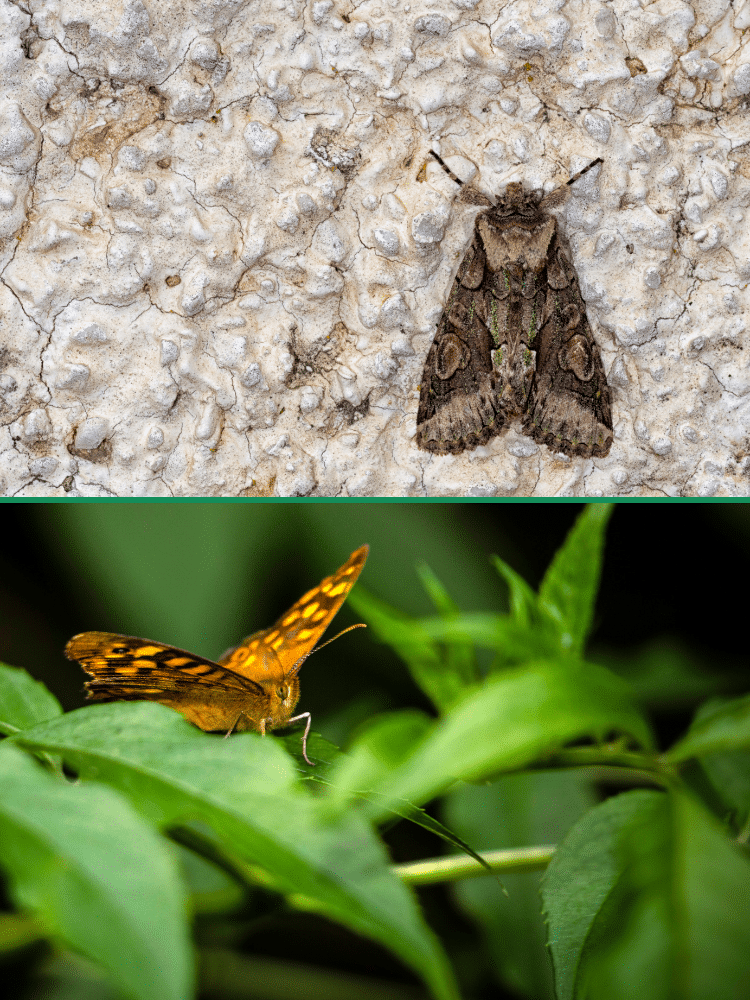It seems like moths come in swarms. This is especially true when we see them crowding lights at night. It can make us wonder, where do moths come from? We know that moths come from eggs, but how are the eggs fertilized? Do moths mate?
Yes, like all of the creatures in the animal kingdom, moths need to mate to reproduce. Moths are technically insects and not animals, so their mating process is vastly different from that of mammals.
How Do Moths Mate?
The mating process is quite complex for moths and requires multiple steps and a lot of time!
Choosing a Mate
Before moths can actually get down to mating, they need to find a mate!
Butterflies attract mates with their beautiful, bright, and bold patterns. Moths are not that lucky. Not only do moths have a tendency to come out at night, but they also are very drab in colour.
Most moths have white, cream, grey, or brown hues on their wings.
Instead of using their sight to find mates, moths will use their sense of smell. Male moths will sniff out female moth pheromones to locate them.
Some species will wait in tree branches for females to fly by. Other species will catch the whiff of a female and fly miles to find her.
Mating
Before moths begin mating, many male moths spray themselves and their mate with toxins to deter other predators from interrupting them.
They also have to be ready to fly safely away at any moment.
To keep the mating process going, even if they need to make a quick getaway, male and female moths will attach to one another on their abdomens.
Male moths have “claspers”, which are best described as short, hand-like appendages located on their anus. He will use these to hold onto the female moth.
Once they are attached, he will pass the spermatophore to the female through his penis. The spermatophore is a sac filled with sperm and other nutrients to help the larvae grow.

The female will keep this in her bursa copulatrix, the reproductive organ located in her abdomen until she is ready to lay her eggs.
It is not uncommon for the female to mate with more males before she lays all the eggs.
Once she is ready to lay the eggs, she will find a place that has ample food sources for the larvae when they emerge.
How Long Do Moths Take to Mate?
Moths take their time when it comes to mating.
One of the reasons that moths attach to one another when mating is the length of time it takes to complete the process. It can take up to 9 hours for moths to mate successfully.
9 hours is a lot of time for moths to be vulnerable.
Another way some species protect themselves from predators is with a toxin to deter them. These male moths are not born toxic but gather toxins from the plants they eat.
Before mating, some moths will spray themselves and their mate with the substance, protecting them and preventing them from being interrupted.
Sometimes, the toxins stay with the female and protect her for the rest of her life cycle. Other Times, the toxins will protect the eggs when they are laid.
What is Moth Mating Season?
If you are hoping to protect your home from an influx of moths by knowing when the eggs will likely hatch, you will be sad to hear that there is no moth mating season.
There are wide varieties of moths, and they all mate at different times of the year.
They will also continue to mate and go through life cycles rather quickly. Most species of moths will reach 10-15 generations in a single summer!
Other than a few species that thrive in the winter months, most moths need the sun’s warmth to fly and live, making late spring, summer, and early fall prime time for moths.
Yes, there are male and female moths. Male moths will have the male reproductive parts and create sperm. Female moths will have female reproductive parts and lay eggs.
Yes, there are one or two species that can reproduce asexually. The most common moth which is asexual is the fennicella moth.
Summary
Moths reproduce by mating. The process can take up to 9 hours and requires a lot of biological features.
Moths attach to one another to keep the process going, even if they need to fly away if a predator approaches. Some species even cover themselves and their mates in toxins to deter predators.
After the process is complete, a female moth may mate with even more males before laying her eggs.
Since moths need warm weather, most moth species will mate and reproduce in late spring to early fall. There are some species of moths that thrive in the cold winters and will mate during this time.







